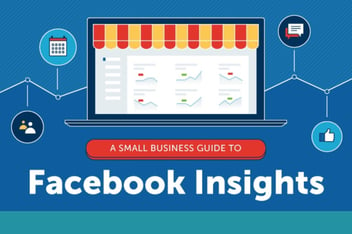Blog Metrics to Measure & Use (Part 1-Traffic)
.jpg)
One of the key steps in any marketing campaign is analysis — reviewing results to find what works, what doesn’t, and how you can improve the next round. Business blogs written to fuel inbound marketing are no different.
How often do you review your blog metrics to find answers to key questions such as:
-
Is my blog bringing traffic to the website?
-
Is that traffic increasing over time?
-
What blog posts generate the most views?
-
How are readers finding my blog posts?
-
Are readers interacting through comments, links or social media shares?
The answers to those questions are needed to help you make decisions about what blog topics to focus on, how to promote your business blog and how to turn visitors into customers.
In this post, we’ll review the top level of your business blog metrics, dealing primarily with the website traffic and blog views generated. Next week, we’ll take a deeper look at how blog posts generate not only views, but also leads and customers.
Blog metrics you should review regularly
Traffic totals
How many people read your business blog? It seems like a basic number, but tracking your traffic from a number of viewpoints can help pinpoint how and when to promote posts for even greater numbers.
Chart your blog views:
-
Daily
-
Weekly
-
Monthly
Do you get more views and visitors on certain days of the week, or even at certain times of day? How do those match up with the types of blog posts being visited or your blog promotion activities?
Also look at trend lines — is your readership growing over time? Has it leveled off, indicating a need to find new audiences?
Individual post views
Pull up a report of the blog posts that have generated the most views in the last week/month/quarter, looking both at those published within that time frame and all of your posts over time. (Why look back at those published months or even years ago? They may still be driving significant traffic. Read Business Blogging & The Power Of Compounding Posts.)
Look for commonalities amongst the most popular posts. Do they share similar:
-
Length?
-
Style?
-
Headline format?
Whatever those commonalities are, consider focusing more on them, as they obviously resonate with your readers.
Also, jot down those extra popular posts to give them a new round of promotion, as well. (Here are two roundups of our most popular posts, compiled at the end of 2018, in case you may have missed them: 2017’s Top Marketing Blog Posts and 15 Perennial Favorites From the Inbound Accelerator.)
Most common channels
Along with knowing which individual posts have attracted the most views, you need to know which channels are bringing the most visitors to your site. Your blog management and measurement software should be able to give you a breakdown that includes:
-
Direct (visitors typed your URL directly into the browser or used a saved bookmark)
-
Organic search (also review which search terms were used to find your site and post)
-
Paid search (if you use it)
-
Social media (which platforms were most likely to generate click-throughs?)
-
Email (and look at what specific emails generated the most traffic)
Subscribers
Keep an eye on the number of subscribers you have. Is it increasing or decreasing? If you are losing subscribers, review your emails to see what might be turning them away. And be sure to have an option when subscribers choose to opt-out to instead change the frequency of emails they receive. Perhaps daily updates are too much, but they would choose to remain a subscriber if they can receive a weekly digest instead.
More about subscribers: Boost Blog Subscriptions To Increase Lead Generation Potential.
Comments
Comments are important signal that your blog posts are reaching readers and engaging them. Track which posts are most likely to generate comments? Are readers most likely to comment on posts in which you take a stand on a controversial issue, or provide thoughts on an emerging trend? Be sure to continue to mix those styles of posts into your mix.
Shares
Content shared on social media and inbound links from other blogs or web pages to your own are important to building brand awareness, reaching new audiences, and gaining SEO power for your web page.
Review which posts are most likely to be shared or linked. Are your readers most likely to share infographics or video? Do statistics or original research generate more backlinks?
Again, work to incorporate more of what works to give your business blog a boost in search engine rankings and social media awareness.
How do you feel about your results so far? Website traffic and blog viewership numbers provide a good start to your measurement task, but traffic alone isn’t a sign of an effective business blog. Your blog also needs to support business objectives by generating leads and providing support for converting leads into customers. We’ve covered those metrics as well. Click here for Part 2 of our blog metrics discussion: Lead Conversion.
You’ll also find more about using all of your marketing metrics—not just those for your business blog—to prove and improve the effectiveness of your tactics in our ebook: Unlock The ROI Of Your Marketing With Analytics.
-1.png?width=1652&height=294&name=Jones(RGB)-1.png)








.jpg?width=352&name=Blog%20Metrics%20To%20Measure%20%26%20Use%20(Part%202-%20Lead%20Conversion).jpg)


